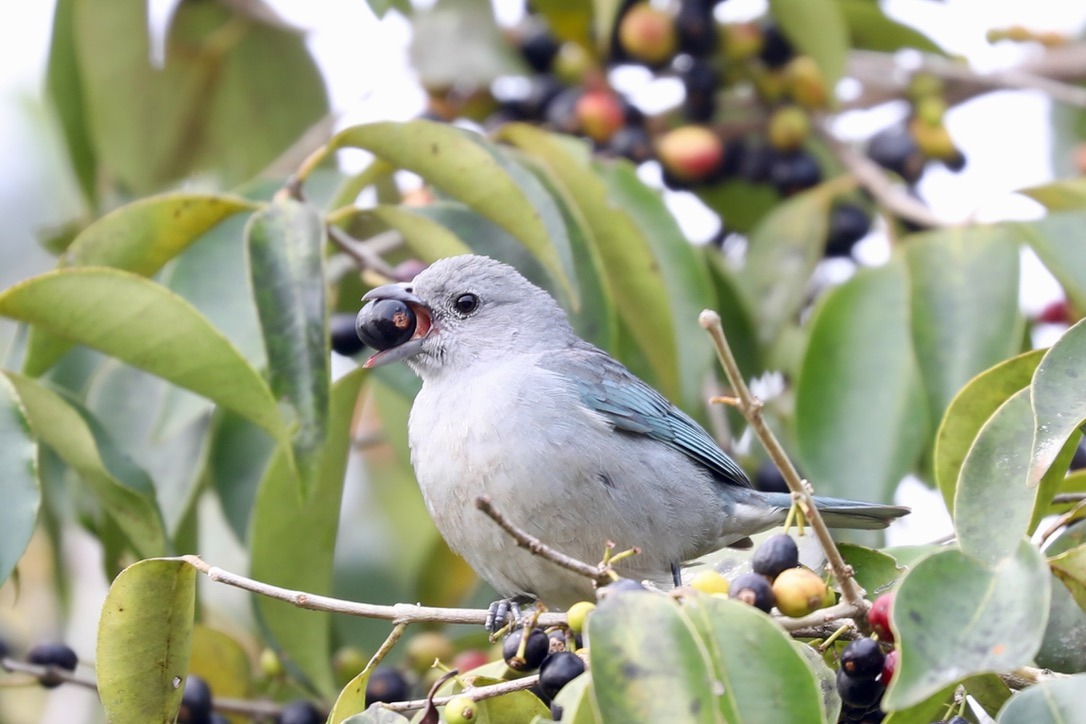News release
From:
When at the edges of their geographic ranges, fruit-eating birds favor foods that more closely match their beak size, researchers report, suggesting that foraging niches (the diversity of food resources a species uses) become more specialized toward the periphery of a species range. The findings may help explain geographic variation in species’ fitness and are important for accurately predicting species’ responses to continued environmental change, which is forcing many populations to live near or outside their historic range limits. Animals feed on a subset of available resources within their environment. Optical foraging theory suggests that species select diets to maximize energy or nutrition. However, environmental stress can force species to alter their diet in ways that are not optimal. Near the edge of their geographic range, species may face restricted diets and resource availability, which could determine species’ range limits. Although previous studies have evaluated how diet breadth may change within species’ ranges, it remains unclear whether the locations of range boundaries are a cause of diet selection (e.g., if foraging conditions near range limits drive changes in diet) or a consequence of it (e.g., if low resource availability determines range limits). Lucas Martins and colleagues investigated how frugivorous (fruit-eating) birds vary their use of different resources across their ranges. Martins et al. hypothesized that these birds optimize their foraging strategy near range edges by eating the largest fruits they can fit into their beaks with minimal effort. Combining data on fruit-feeding interactions between 97 bird and 831 fruiting plant species recorded in 126 locations across 6 continents, the authors evaluated how closely birds matched fruit size to their beak size relative to their distance from range limits. According to the findings, birds, particularly highly frugivorous species, eat more closely size-matched fruits near their geographic range edges than those at the center, resulting in a narrower foraging niche in range-edge populations. In a Perspective, Anna Hargreaves and Jake Alexander discuss the study and its limitations in greater detail.
Expert Reaction
These comments have been collated by the Science Media Centre to provide a variety of expert perspectives on this issue. Feel free to use these quotes in your stories. Views expressed are the personal opinions of the experts named. They do not represent the views of the SMC or any other organisation unless specifically stated.
Dr Lucas P. Martins, Post Doctoral Fellow, School of Biological Sciences, University of Canterbury, comments
Have you ever felt that you eat more caloric food when you’re under stress? Similarly, birds may increase their caloric intake in stressful environments by eating the largest possible fruits that can fit easily in their beaks.
Using a global dataset of interactions between birds and the fruit species they consume, a team of researchers found that birds more frequently eat fruits that match their beak size near their geographic range limits, where conditions tend to be more challenging for the species. This suggests that birds may be more strongly forced to select the 'ideal' fruit size where stress and energetic demands are higher.
Such changes in fruit selection may not only influence seed dispersal, an essential process for the survival and spread of many plant species, but also explain species’ responses to environmental change, which is forcing many populations to live near or outside their historic range limits.



 New Zealand; International
New Zealand; International



